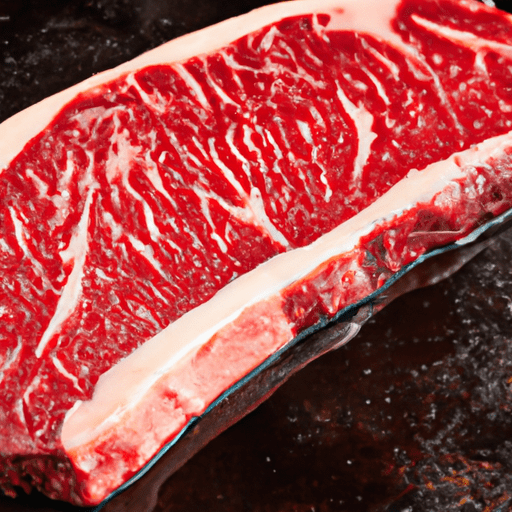All About Boneless Strip Steak
If you are a meat lover, then the boneless strip steak is a cut that deserves your attention. This flavorful and versatile cut of beef has become a favorite among steak enthusiasts for its tenderness and rich taste. In this post, we will explore the wonders of boneless strip steak, from its taste and common uses in cooking to its nutritional value and interesting facts.
Taste and Texture
Boneless strip steak, also known as New York strip steak or strip loin steak, is renowned for its robust and beefy flavor. It offers a satisfying balance between tenderness and firmness, with a slightly firmer texture compared to ribeye steak. The marbling throughout the steak imparts a luxurious juiciness while ensuring a melt-in-your-mouth experience with every bite. When cooked to perfection, boneless strip steak boasts a lightly charred crust and a tender, pink center.
Common Cooking Methods and Pairings
Boneless strip steak is incredibly versatile and can be prepared using various cooking methods. Grilling is a popular choice, as the high heat helps to sear the steak and enhance its natural flavors. Pan-searing is another excellent method, which allows for better control over the level of doneness. Additionally, broiling or oven-roasting boneless strip steak can result in a succulent and evenly cooked piece of meat.
To elevate the flavors of boneless strip steak, consider marinating it beforehand. A simple marinade consisting of olive oil, garlic, herbs, and a touch of acidity, like lemon juice or balsamic vinegar, can work wonders. In terms of pairings, boneless strip steak pairs perfectly with classic steakhouse sides such as roasted potatoes, sautéed vegetables, or a fresh green salad. For more adventurous palates, try serving it with a flavorful chimichurri sauce or a creamy peppercorn sauce.
Nutritional Value
Boneless strip steak not only satisfies your taste buds but also provides essential nutrients for your body. It is a great source of high-quality protein, which helps in muscle growth and repair. Furthermore, boneless strip steak is rich in iron, zinc, and vitamin B12, promoting healthy blood circulation and supporting immune function. Remember to enjoy it in moderation and balance it with a variety of other nutrient-dense foods as part of a well-rounded diet.
Interesting Facts and History
Did you know that boneless strip steak gets its name from the famous “Delmonico’s” restaurant in New York City? In the mid-19th century, Delmonico’s served this cut as one of their signature dishes, garnering widespread popularity. This steak became synonymous with New York’s dining scene, leading to it being referred to as “New York strip steak” or “strip loin steak.” Today, it is loved worldwide and remains a staple in steakhouses and home kitchens alike.
Conclusion
Boneless strip steak is a delicious, tender, and flavorful cut of beef that will satisfy any meat lover’s craving. Its robust taste, versatility in cooking methods, and nutrient profile make it a fantastic choice for various occasions. Whether you decide to grill it to perfection, sear it on a stovetop, or roast it in the oven, boneless strip steak is sure to please your palate. Don’t forget to pair it with your favorite sides and sauces for a complete and memorable dining experience. Enjoy the culinary delight that boneless strip steak has to offer!
Boneless Strip Steak
Origin: Boneless strip steak, also known as New York strip steak or Kansas City steak, comes from the short loin primal cut of beef. It is believed to have originated in the United States in the mid-19th century.
Common Uses: Boneless strip steak is a popular choice for grilling, pan-searing, or broiling due to its tenderness and rich flavor. It is often served as a standalone steak, but it can also be used in various dishes like fajitas, stir-fries, kebabs, and steak sandwiches.
Nutritional Benefits: Boneless strip steak is a good source of high-quality protein, vitamins, and minerals. It contains essential nutrients such as iron, zinc, phosphorus, vitamin B12, and vitamin B6. However, it is important to note that the nutritional composition can vary depending on the animal’s diet and preparation method.
Unique Properties: Boneless strip steak is known for its fine marbling and tender texture. It has a robust beefy flavor that is not as fatty as ribeye steak but richer than tenderloin. The absence of the bone allows for easier cooking and carving. The fat cap surrounding the steak adds flavor and helps keep it moist during cooking.
Historical Significance: The boneless strip steak became particularly popular in Kansas City during the heyday of the Kansas City Stockyards in the early 1900s. The booming meatpacking industry led to an increased demand for various cuts of beef, including the boneless strip steak. It quickly gained popularity across the United States and became a staple in the American steak culture.
Please note that while boneless strip steak is generally recognized for its flavor and tenderness, the quality and taste can vary depending on factors such as the breed of cattle, feed, aging process, and cooking method.




Use the share button below if you liked it.
It makes me smile, when I see it.